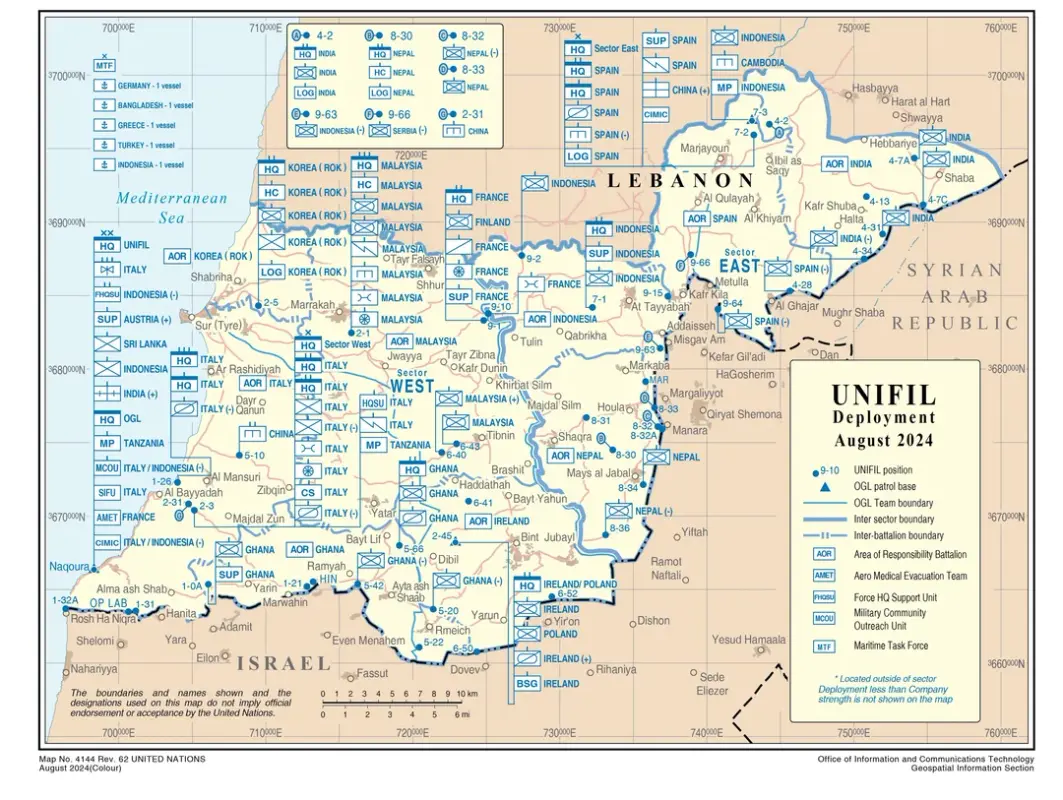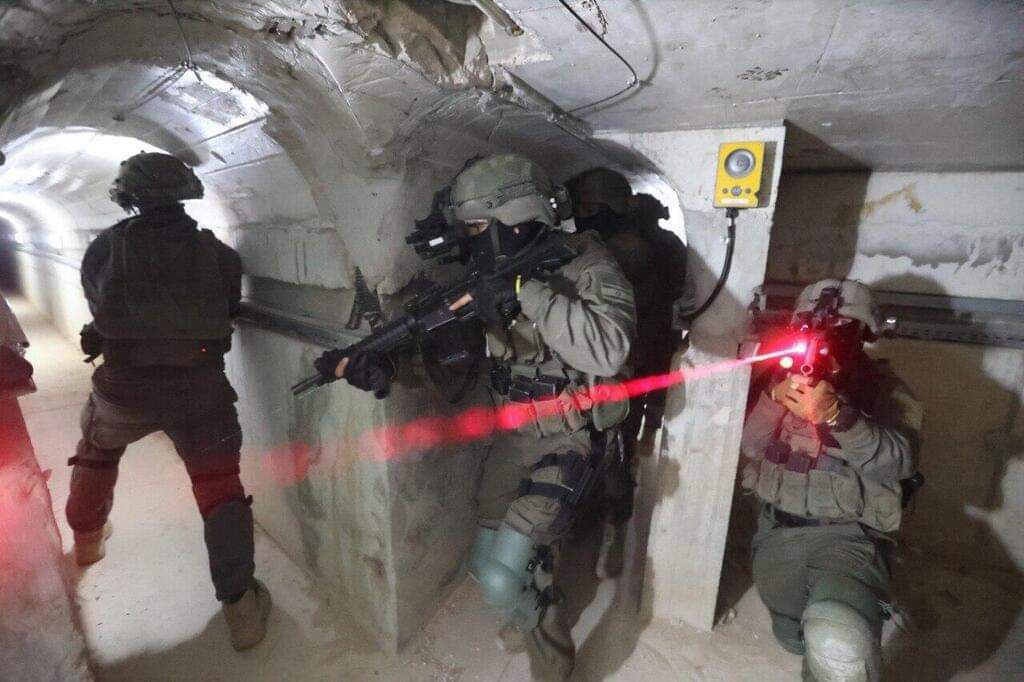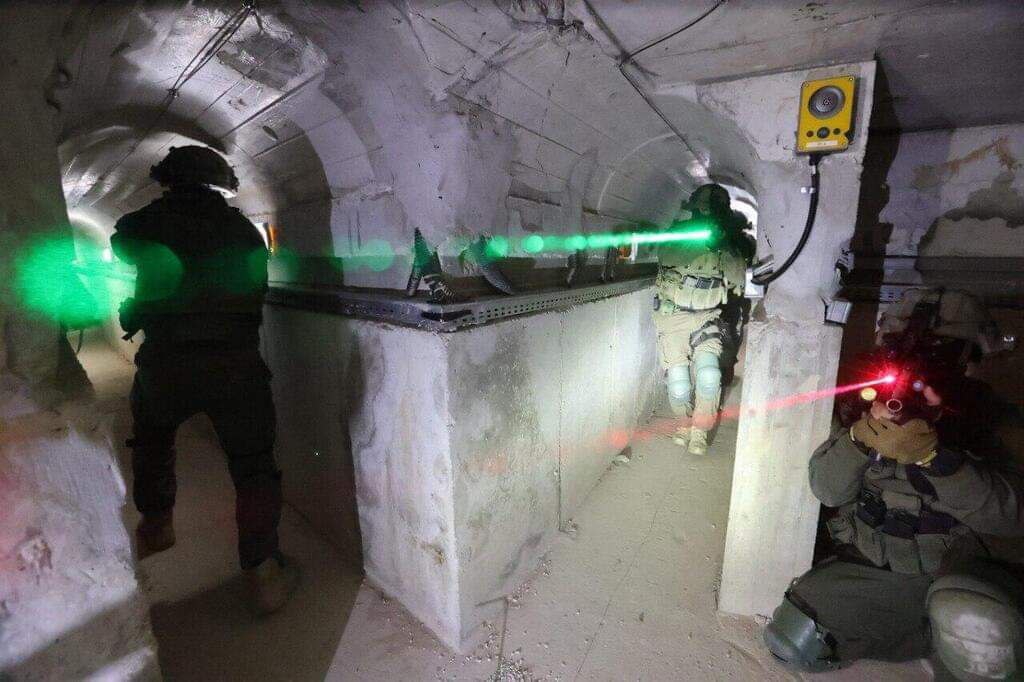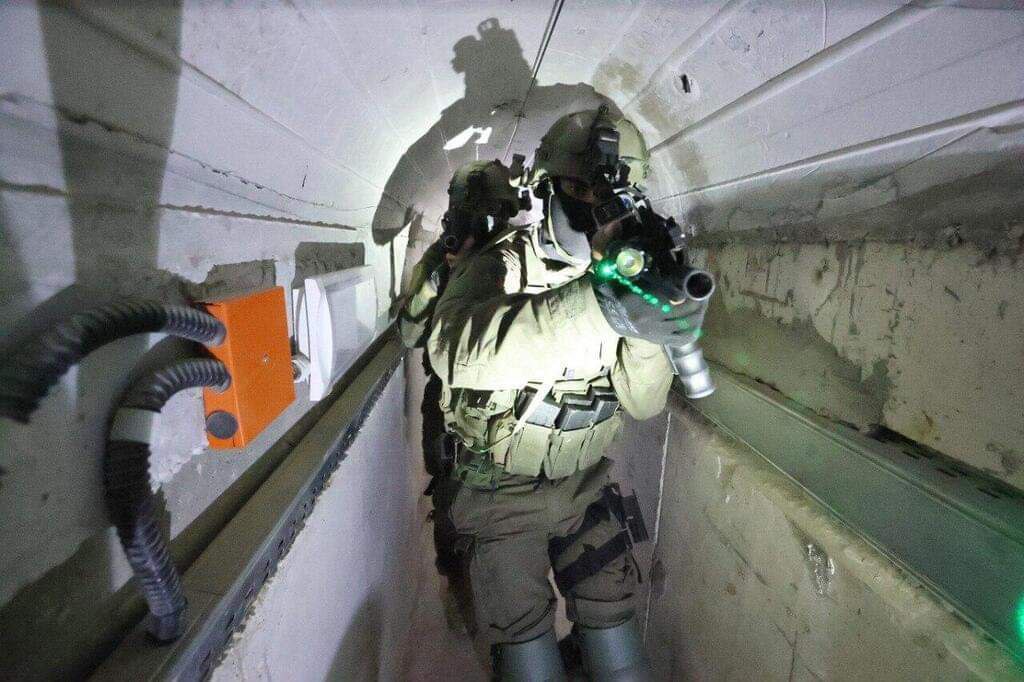[BIZTPOL] Közel-kelet
- Téma indítója duckdodgers™
- Indítva
You are using an out of date browser. It may not display this or other websites correctly.
You should upgrade or use an alternative browser.
You should upgrade or use an alternative browser.
Survivors of Israeli Bombardment Face New Catastrophe: Epidemics, Amputations, Starvation
"Everyone is malnourished, everyone is immunocompromised"
Murtaza HussainOct 15

Amid Israel’s brutal onslaught in Gaza, Israeli weapons makers have seen unprecedented
financial success and a unique opportunity to show off their latest tech. The Palestine Laboratory, a four-part podcast series, takes listeners on a global journey into how this tech was developed, why so many nations want it, and how it’s fueled by anti-Palestinian racism.
The Palestine Laboratory is available across all podcast platforms and on DropSiteNews.com. As a thank you gift to paid subscribers to Drop Site News, we are making all episodes in this series available right away. For everyone else, episodes will be released every Friday. You can become a paid subscriber today by heading to DropSitenews.com/PalestineLab for a 20% discount on your subscription.
You’ll also want to check out our latest, a collaboration with our colleagues at The Ditch, a non-profit investigative news outlet in Ireland which has been tracking the illegal flow of weapons through Irish airspace and Irish airports.
As the northern Gaza Strip is subjected to a fresh campaign of massacres and enforced starvation, doctors working elsewhere in Gaza say that a quieter threat is now sweeping across the territory: chronic disease and infection.
One year into the conflict, attacks on civilians in the territory have continued to escalate, including bombings of hospitals and schools in the north that have inflicted a staggering number of civilian casualties. While clinics in the north have been overwhelmed by traumatic injuries from aerial bombings and other attacks, medical facilities in other parts of the Strip that are not presently the focus of this campaign have seen a relative decline in such injuries, doctors in Gaza told Drop Site News.
Amid this lull in trauma cases in other parts of the Strip, the full impact of disease and malnutrition on the Palestinian population is becoming clear to medical authorities, as patients grow desperate for access to the meager healthcare infrastructure still operating in the territory.
A boy walks through a puddle of sewage water in the northern Gaza Strip / Source: Omar AL-QATTAA / AFP via Getty Images
“We are dealing with the health consequences of an entire population that has not had access to regular medical treatment for over a year, and where hundreds of thousands of people have been pushed out of homes to live in crowded tents without sanitation or access to clean water,” said Nabeel Rana, a vascular surgeon from North Carolina currently on a volunteer medical mission at Nasser Hospital in the southern Gaza city of Khan Younis. “We are seeing huge numbers of people come in who have severe complications from easily treatable diseases and infections. It is getting to the point where it is becoming overwhelming.”
The war has seen direct attacks not just on medical facilities, but on sewage pumps, wastewater treatment plants, and wells, making potable water a scarcity for people living in Gaza. In July, video footage emerged of Israeli soldiers demolishing a water pump facility in the city of Rafah, one of many documented and intentional attacks on water infrastructure in the territory.
Khalid Mortaga, a 22-year-old U.S. citizen who remains stuck with his family in Deir al-Balah, a town in central Gaza, said that he and his family members have suffered from chronic skin diseases, hepatitis, and other ailments as a result of being forced to use contaminated water.
“On the first of October I was diagnosed with hepatitis. For the next ten days I was in bed most of the time, my face had gone pale and my eyes had turned yellow,” Mortaga said. “Many people around us in Deir al-Balah are also suffering this disease, but the most common health problems that most people suffer from are skin diseases as a result of the salty and dirty water that we are using for drinking and bathing.”
Mortaga shared photos with Drop Site News of rashes and other skin conditions that he and his family are presently suffering. “Many people are looking for medicine and can’t find it,” he said. “My mother went to a skin doctor and he prescribed her some medicine but she couldn’t find it. My father also has chronic sinusitis and can’t find the spray that he normally uses.” He and his family are still waiting on the State Department to help them evacuate.
Gathering accurate figures on the full impact of disease in Gaza is nearly impossible due to restrictions on entry to the territory and the collapse of the healthcare system during the war. Yet reports from medical personnel still working in Gaza paint a grim, consistent picture of a population succumbing to the ravages of disease.
On Monday, Mohammed Aghaalkurdi, a humanitarian worker working in Khan Younis, published an opinion piece in The New York Times assessing the catastrophe facing Gaza’s health system. “Water lines that supply the area have been cut, sewage floods the streets, and people have no choice but to live in tents because of constant evacuations and bombings. Many have been forced to use seawater contaminated with untreated sewage to wash themselves and their clothes. There is almost no soap or washing liquid available to buy,” he wrote. “On a daily basis, our team’s medical points in southern Gaza now see around 180 children with skin rash diseases, such as impetigo and chickenpox.”
Prior to the war, Gaza was already among the most densely populated places on earth. Much of the population has now been forced into a number of so-called “safe zones,” including an area along the coast known as Mawasi, Rana said. While the level of death and displacement in the territory has made it difficult to obtain exact population figures, as many as 1.9-million Palestinians may be concentrated in the safe zones. The population density of Mawasi itself is now estimated to exceed 30,000 people per square kilometer. “The entire area is just packed with tents and camps. It’s unfathomable. There are tents as far as you can see, and no bathrooms or access to running water,” Rana added.
Under these conditions, communicable diseases like meningitis, Hepatitis A, gastrointestinal infections, scabies, and chickenpox are widespread. Earlier this year, reports of polio in Gaza also surfaced, leading to a brief pause in fighting to administer emergency vaccines and prevent a further spread of the disease.
“We are seeing people with severe complications from things that could've been easily avoided, including many individuals with diabetes who have fallen seriously ill for lack of appropriate food,” Rana said. Small wounds often go untreated, leading to gangrene and a high rate of partial hand and foot amputations. “We have been doing more amputations for infected wounds and for diabetics than for traumatic injuries lately.”
While the death toll from fighting estimated by Gaza’s Ministry of Health has exceeded 40,000 since the start of the war, medical reports suggest that the real number of deaths caused by the war is likely already magnitudes higher due to the deliberate destruction of water, sewage, and healthcare infrastructure.
The Ministry of Health does not include deaths from disease and other indirect causes stemming from the war in its tabulations of the dead. But a study from July in The Lancet, a British medical journal, estimated that “excess deaths” resulting from the destruction of healthcare infrastructure and other civilian infrastructure may have already exceeded 186,000 since the war began, a number that the authors estimate to be between 7-9% of the total pre-war population of the territory.
Assessing the scope of the loss is even more difficult since only a fragment of the population in Gaza has access to medical assistance at the moment. “The vast majority of the population are living in these unreachable tent encampments. We are probably not capturing even a fraction of the number of heart attacks and strokes that are taking place,” Rana said. “There are so many cases of meningitis that we are seeing at the hospital it is really becoming an epidemic. Calculating the rate of spread of infectious disease at this point is simply impossible.”
Current conditions are likely to exacerbate the crisis. “There is waste everywhere, trash everywhere, there is sewage in the street where people are walking, all of this is calculated to cause mass infectious disease. There is no clean water to drink. I’ve literally seen kids drinking sewage water off the streets, that’s the level of desperation,” Rana added. “Everyone is malnourished, everyone is immunocompromised, and these are the people who have survived the bombing.”
The idea of weaponizing disease against Gazans gained public purchase last November when Giora Eiland, an influential retired major general in the Israel Defense Forces and an advisor to Defense Minister Yoav Gallant, began championing the use of starvation, disease, and denial of water as tools of war.
In November, Eiland wrote an article in the Hebrew-language edition of Yedioth Ahronoth encouraging Israel to inflict suffering on the population through these means. “The international community is warning us against a severe humanitarian disaster and severe epidemics. We must not shy away from this. After all, severe epidemics in the south of Gaza will bring victory closer and reduce casualties among IDF soldiers,” Eiland wrote. On the likely impact on civilians of such a strategy, he added: “Who are the ‘poor’ women of Gaza? They are all the mothers, sisters or wives of Hamas murderers.”
Eiland’s article was later endorsed by Israel’s influential far-right finance minister Bezalel Smotrich, who shared it on social media and stated that he “agreed with every word.”
Eiland is also the architect of a proposal known as the “Generals’ Plan,” which pushes for the use of starvation to empty northern Gaza of its population and transform the territory into a “closed military zone,” a strategy that Israel is reportedly considering deploying in the northern part of the territory.
The advisor to the defense minister and former Israeli National Security Council chief has publicly lauded the destruction of water supplies as a tool for inflicting collective suffering on Palestinians. “Israel, as I understand, closed the water supply to Gaza,” said Eiland in a Hebrew-language interview last year. “But there are many wells in Gaza, which contain water which they treat locally, since originally they contain salt. If the energy shortage in Gaza makes it so that they stop pumping out water, that's good. Otherwise we have to attack these water treatment plants in order to create a situation of thirst and hunger in Gaza, and I would say, forewarn of an unprecedented economical and humanitarian crisis.”
Eiland’s plan for using water, illness, and malnutrition as weapons of war appears to have been implemented in Gaza, with the civilian population now succumbing to the ravages of disease en masse. As a result of these measures, and with the war grinding on, the final death toll in Gaza may wind up exceeding even the most grim estimates now being put forward by medical researchers.
“You don’t have to drop a single bomb and you can wipe out an entire population just by completely destroying their facilities and infrastructure in this way,” Rana said. “That is going to be the cause of the vast majority of deaths at the end of this.”
Prior to the war, Gaza was already among the most densely populated places on earth. Much of the population has now been forced into a number of so-called “safe zones,” including an area along the coast known as Mawasi, Rana said. While the level of death and displacement in the territory has made it difficult to obtain exact population figures, as many as 1.9-million Palestinians may be concentrated in the safe zones. The population density of Mawasi itself is now estimated to exceed 30,000 people per square kilometer. “The entire area is just packed with tents and camps. It’s unfathomable. There are tents as far as you can see, and no bathrooms or access to running water,” Rana added.
Under these conditions, communicable diseases like meningitis, Hepatitis A, gastrointestinal infections, scabies, and chickenpox are widespread. Earlier this year, reports of polio in Gaza also surfaced, leading to a brief pause in fighting to administer emergency vaccines and prevent a further spread of the disease.
“We are seeing people with severe complications from things that could've been easily avoided, including many individuals with diabetes who have fallen seriously ill for lack of appropriate food,” Rana said. Small wounds often go untreated, leading to gangrene and a high rate of partial hand and foot amputations. “We have been doing more amputations for infected wounds and for diabetics than for traumatic injuries lately.”
While the death toll from fighting estimated by Gaza’s Ministry of Health has exceeded 40,000 since the start of the war, medical reports suggest that the real number of deaths caused by the war is likely already magnitudes higher due to the deliberate destruction of water, sewage, and healthcare infrastructure.
The Ministry of Health does not include deaths from disease and other indirect causes stemming from the war in its tabulations of the dead. But a study from July in The Lancet, a British medical journal, estimated that “excess deaths” resulting from the destruction of healthcare infrastructure and other civilian infrastructure may have already exceeded 186,000 since the war began, a number that the authors estimate to be between 7-9% of the total pre-war population of the territory.
Assessing the scope of the loss is even more difficult since only a fragment of the population in Gaza has access to medical assistance at the moment. “The vast majority of the population are living in these unreachable tent encampments. We are probably not capturing even a fraction of the number of heart attacks and strokes that are taking place,” Rana said. “There are so many cases of meningitis that we are seeing at the hospital it is really becoming an epidemic. Calculating the rate of spread of infectious disease at this point is simply impossible.”
Current conditions are likely to exacerbate the crisis. “There is waste everywhere, trash everywhere, there is sewage in the street where people are walking, all of this is calculated to cause mass infectious disease. There is no clean water to drink. I’ve literally seen kids drinking sewage water off the streets, that’s the level of desperation,” Rana added. “Everyone is malnourished, everyone is immunocompromised, and these are the people who have survived the bombing.”
The idea of weaponizing disease against Gazans gained public purchase last November when Giora Eiland, an influential retired major general in the Israel Defense Forces and an advisor to Defense Minister Yoav Gallant, began championing the use of starvation, disease, and denial of water as tools of war.
In November, Eiland wrote an article in the Hebrew-language edition of Yedioth Ahronoth encouraging Israel to inflict suffering on the population through these means. “The international community is warning us against a severe humanitarian disaster and severe epidemics. We must not shy away from this. After all, severe epidemics in the south of Gaza will bring victory closer and reduce casualties among IDF soldiers,” Eiland wrote. On the likely impact on civilians of such a strategy, he added: “Who are the ‘poor’ women of Gaza? They are all the mothers, sisters or wives of Hamas murderers.”
Eiland’s article was later endorsed by Israel’s influential far-right finance minister Bezalel Smotrich, who shared it on social media and stated that he “agreed with every word.”
Eiland is also the architect of a proposal known as the “Generals’ Plan,” which pushes for the use of starvation to empty northern Gaza of its population and transform the territory into a “closed military zone,” a strategy that Israel is reportedly considering deploying in the northern part of the territory.
The advisor to the defense minister and former Israeli National Security Council chief has publicly lauded the destruction of water supplies as a tool for inflicting collective suffering on Palestinians. “Israel, as I understand, closed the water supply to Gaza,” said Eiland in a Hebrew-language interview last year. “But there are many wells in Gaza, which contain water which they treat locally, since originally they contain salt. If the energy shortage in Gaza makes it so that they stop pumping out water, that's good. Otherwise we have to attack these water treatment plants in order to create a situation of thirst and hunger in Gaza, and I would say, forewarn of an unprecedented economical and humanitarian crisis.”
Eiland’s plan for using water, illness, and malnutrition as weapons of war appears to have been implemented in Gaza, with the civilian population now succumbing to the ravages of disease en masse. As a result of these measures, and with the war grinding on, the final death toll in Gaza may wind up exceeding even the most grim estimates now being put forward by medical researchers.
“You don’t have to drop a single bomb and you can wipe out an entire population just by completely destroying their facilities and infrastructure in this way,” Rana said. “That is going to be the cause of the vast majority of deaths at the end of this.”
Ohh, még Amerikai is hajlandó volt "figyelmeztetni" a cuonista terroristaállamot, hogy ha nem engedi be a segélyt Gazaba, akkor irgumburgum, kevesebb tömeggyilkos bombát kapnak majd:
Szánalmas.
Szánalmas.
https://www.portfolio.hu/global/202...ael-szivere-videon-a-tamadas-pillanata-716903
"Videót tett közzé a Hezbollah arról, hogy Kadir-2-es ballisztikus rakétákat lőnek ki Izrael egyik legnagyobb városára, Tel-Avivra."
"Videót tett közzé a Hezbollah arról, hogy Kadir-2-es ballisztikus rakétákat lőnek ki Izrael egyik legnagyobb városára, Tel-Avivra."
P
Pogány
Guest
Ahelyett, hogy védelmi jelegű harckocsikat és lőszert küldenének a hezbollahnak.
Nálam sem jelennem meg a Twitter (X) linkek, csak felvillannak az összes topiknál ez a helyzet...Eddig jó volt...Nálam nem jelenik meg --csak bevillen, majd eltűnik a csatolt twitter--, másnak?
.
F
Filter
Guest
A rombolás kultúrája határvonalhoz ér.
Napirenden az Izrael ellenes szankciók és az EU társulási szerződés felfüggesztése.

 www.portfolio.hu
www.portfolio.hu
Napirenden az Izrael ellenes szankciók és az EU társulási szerződés felfüggesztése.

Egyedül mér csapást Izraelre egy EU-ország
Simon Harris ír miniszterelnök szerdán bejelentette, hogy Írország nem várja meg, míg az Európai Unió egésze lépéseket tesz az izraeli-palesztin területeken folytatott háborúja miatt. A taoiseach elmondta, hogy jövő héten jogi tanácsokat vár az ír főügyésztől arról, hogy Írország milyen...
de egy egységen belül, elvileg mindegy Yahalom, a roham utász (combat engineer) hadtest specops alakulata





